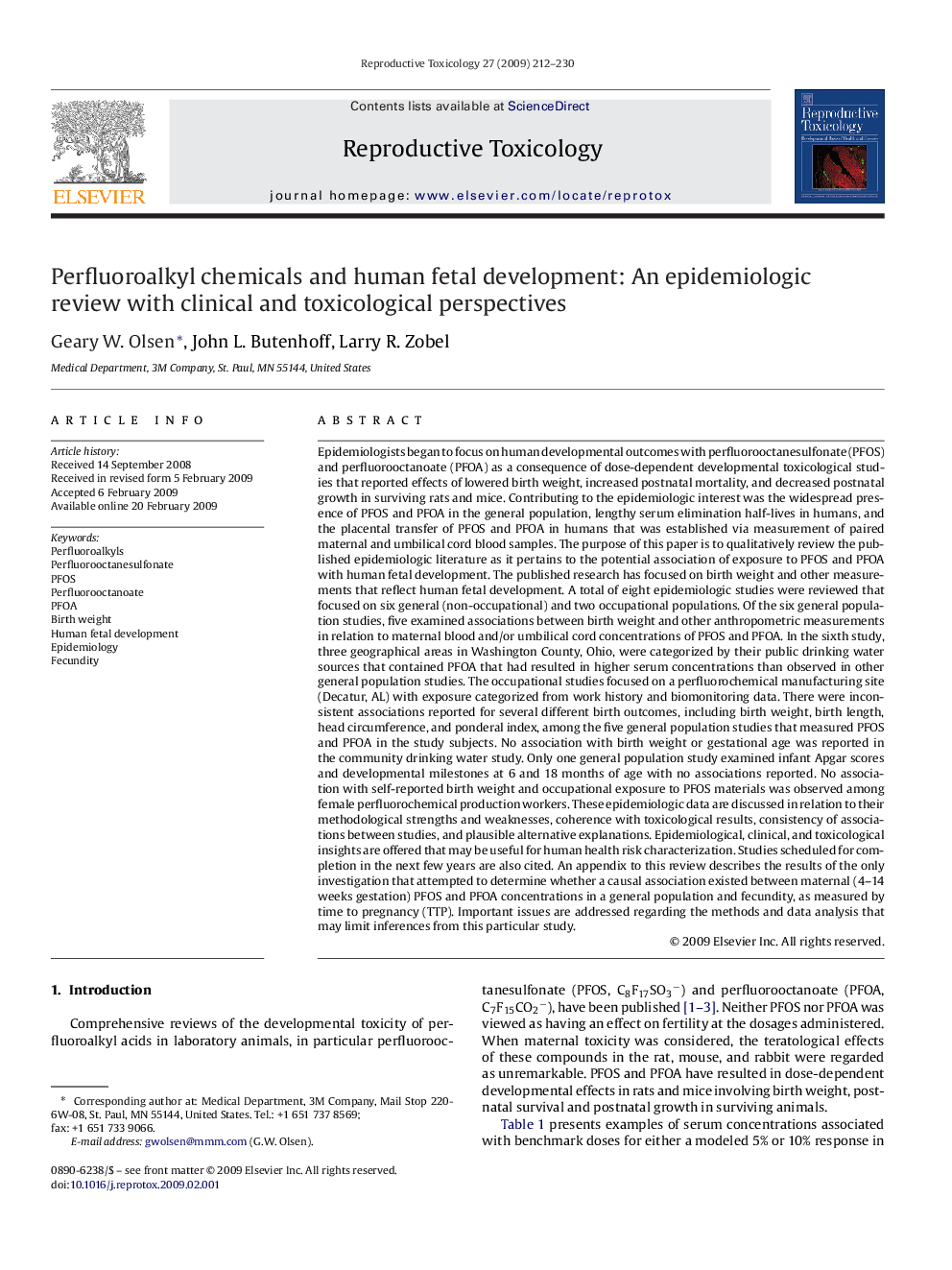| کد مقاله | کد نشریه | سال انتشار | مقاله انگلیسی | نسخه تمام متن |
|---|---|---|---|---|
| 2594654 | 1562186 | 2009 | 19 صفحه PDF | دانلود رایگان |

Epidemiologists began to focus on human developmental outcomes with perfluorooctanesulfonate (PFOS) and perfluorooctanoate (PFOA) as a consequence of dose-dependent developmental toxicological studies that reported effects of lowered birth weight, increased postnatal mortality, and decreased postnatal growth in surviving rats and mice. Contributing to the epidemiologic interest was the widespread presence of PFOS and PFOA in the general population, lengthy serum elimination half-lives in humans, and the placental transfer of PFOS and PFOA in humans that was established via measurement of paired maternal and umbilical cord blood samples. The purpose of this paper is to qualitatively review the published epidemiologic literature as it pertains to the potential association of exposure to PFOS and PFOA with human fetal development. The published research has focused on birth weight and other measurements that reflect human fetal development. A total of eight epidemiologic studies were reviewed that focused on six general (non-occupational) and two occupational populations. Of the six general population studies, five examined associations between birth weight and other anthropometric measurements in relation to maternal blood and/or umbilical cord concentrations of PFOS and PFOA. In the sixth study, three geographical areas in Washington County, Ohio, were categorized by their public drinking water sources that contained PFOA that had resulted in higher serum concentrations than observed in other general population studies. The occupational studies focused on a perfluorochemical manufacturing site (Decatur, AL) with exposure categorized from work history and biomonitoring data. There were inconsistent associations reported for several different birth outcomes, including birth weight, birth length, head circumference, and ponderal index, among the five general population studies that measured PFOS and PFOA in the study subjects. No association with birth weight or gestational age was reported in the community drinking water study. Only one general population study examined infant Apgar scores and developmental milestones at 6 and 18 months of age with no associations reported. No association with self-reported birth weight and occupational exposure to PFOS materials was observed among female perfluorochemical production workers. These epidemiologic data are discussed in relation to their methodological strengths and weaknesses, coherence with toxicological results, consistency of associations between studies, and plausible alternative explanations. Epidemiological, clinical, and toxicological insights are offered that may be useful for human health risk characterization. Studies scheduled for completion in the next few years are also cited. An appendix to this review describes the results of the only investigation that attempted to determine whether a causal association existed between maternal (4–14 weeks gestation) PFOS and PFOA concentrations in a general population and fecundity, as measured by time to pregnancy (TTP). Important issues are addressed regarding the methods and data analysis that may limit inferences from this particular study.
Journal: Reproductive Toxicology - Volume 27, Issues 3–4, June 2009, Pages 212–230